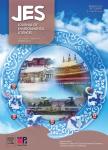Methane emissions from rice fields under continuous straw return in the middle-lower reaches of the Yangtze River
Methane emissions from rice fields under continuous straw return in the middle-lower reaches of the Yangtze River作者机构:College of Agronomy Nanjing Agricultural University Key Laboratory of Crop Physiology Ecology and Production Management Ministry of Agriculture
出 版 物:《Journal of Environmental Sciences》 (环境科学学报(英文版))
年 卷 期:2013年第25卷第9期
页 面:1874-1881页
核心收录:
学科分类:083001[工学-环境科学] 0830[工学-环境科学与工程(可授工学、理学、农学学位)] 08[工学]
基 金:supported by the National Science and Technology Support Plan Project in China (No. 2012BAD04B08 2011BAD16B14)
主 题:methane emission rice or wheat straw continuous returning dissolved oxygen of paddy water soil redox potential
摘 要:A three-year experiment was conducted in the middle-lower reaches of the Yangtze River in China to study the influence of continuous wheat straw return during the rice season and continuous rice straw return in wheat on methane (CH 4 ) emissions from rice fields in which, the rice-wheat rotation system is the most dominant planting pattern. The field experiment was initiated in October 2009 and has continued since the wheat-growing season of that year. The analyses for the present study were conducted in the second (2011) and third (2012) rice growing seasons. Four treatments, namely, the continuous return of wheat straw and rice straw in every season (WR), of rice straw but no wheat straw return (R), of wheat straw but no rice straw return (W) and a control with no straw return (CK), were laid out in a randomized split-plot design. The total seasonal CH 4 emissions ranged from 107.4 to 491.7 kg/ha (2011) and 160.3 to 909.6 kg/ha (2012). The increase in CH 4 emissions for treatments WR and W were 289% and 230% in the second year and 185% and 225% in the third year, respectively, in relation to CK. We observed less methane emissions in the treatment R than in CK by 14%-43%, but not statistically significant. Treatment R could increase rice productivity while no more CH 4 emission occurs. The difference in the total CH 4 emissions mainly related to a difference in the methane flux rate during the first 30-35 days after transplant in the rice growing season, which was caused by the amount of dissolved oxygen in paddy water and the amount of reducible soil materials.



